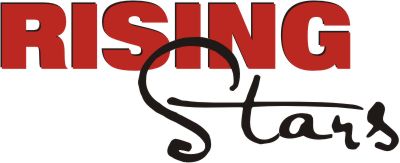

By Adnan M. S. Fakir
Basic Education is a must for a country's development and it is the 2nd Millennium Development Goal (MDG) targeted to be achieved by 2015. The goal targets 100%, enrollment rate for primary education by 2015 in Bangladesh. However, the net enrollment rate in primary education is stated to have only increased from 73.6% in 1992 to 82.7% in 2005. If one is to plot a graph out of these figures, it is easy to see that attaining the goal will be extremely difficult. However, simply 100% enrollment rates in primary education will not necessary mean the attainment of the goal, nor a proper advancement towards development.
The reason behind providing the primary education is so that the students actually learn and apply basic education in real life, which is often misinterpreted; hence it is important to define the term basic education. Basic education is defined as education intended to meet basic learning needs, which in turn was defined as knowledge, skills, attitudes and values necessary for the people to survive, to improve the quality of their lives, and to continue learning (WCEFA, 1990). The first step towards this was the Primary Education (Compulsory) Act enacted in 1990, which made classes I-V free and compulsory for all, usually 6-10 years old.
Taking into account that the enrolment rate has to increase while countering the population growth rate, (which has decreased from 2.2 in 1960 to 1.88 in 2005), the MDG Bangladesh Report (2005) stated that the enrolment rate should increase at a rate of 1.25% for girls and 1.50% for boys, per year in order to reach the MDG. However, the rate so far has been advancing at only 0.7%. At this rate, it is projected to be 2030 by the time the goal is attained, which is almost double the targeted time. 
Keeping aside just the enrolment rate, the major challenge till now is to increase quantity while maintaining or rather improving the quality of the education. By this, it is meant that unless students actually learn what is being taught, 100% enrollment will not bring about the desired development.
In order to determine the quality of our basic education, a survey and study was carried out by Samir R. Nath and A. Mushtaque R. Chowdhury of the Research and Evaluation Division (RED) of BRAC, titled, “Level and Trend of Basic Education of Children in Bangladesh: 1993-1998” which was published in the Journal Educational Studies in 2002. Although it may seen quite back dated, we must keep in mind that we are talking on a macro-perspective, for which this is in fact a small period of time. Also, recent evaluations have shown that the data presented in this study is still applicable for recent years.
The study was implemented for the age group of all children in Bangladesh aged 11-12 years old, which covers approximately 5.5% of the population. The survey was based on skills that are expected to be achieved from primary schooling and addressed four competencies: Life Skills, Reading, Writing and Numeracy, all based on the goals of the Education for All (EFA) and country's official definition of literacy. It included 10 Life Skills questions on health and hygiene, poultry and livestock, population, basic attitude towards gender equity and the outside world. The Reading section comprised of a simple short comprehension and the Writing section involved writing a letter to a relative to pass on a specified message. Finally, the Numeracy test included four questions with addition, subtraction, multiplication and division. On average, students who could answer 75% of the questions in the survey correctly were considered to have basic education.
The survey was done on a group of 2520 students on February 1993 and again on 3360 students on October-November 1998, selected from all over Bangladesh based on a precision level of 7% and a 95% confidence limit. The results revealed that only 26.7% of the children surveyed satisfied all four criteria of basic education in 1993, which rose to only 29.6% after 5.5 years in 1998. Although the level is certainly increasing, the pace is too slow and has to be accelerated for the desired level of development. Furthermore, while the level of basic education of rural children increased from 23.4% in 1993 to 26.5% in 1998 (with a p value of < 0.05), it decreased in urban areas from 55.7% in 1993 to 48.4% in 1998 (p<0.05). In both surveys the performance in Life Skills was poor, but good for Numeracy, while a moderate performance was seen in Reading and Writing.
One should not however, confuse the term “basic education” with “literacy”. While basic education refers to the 4 criteria mentioned above, literacy refers to only 3 minus the Life Skills knowledge. From the survey, literacy level was found to have increased from 39.6% to 42.5% over the course of 5.5 years.

